-
Why we love it
The itinerary goes through villages that are rich in history, artistic interest and beautiful landscapes. It crosses the Tauber Valley, Ries plain and the Alps, but nevertheless has a very little elevation gain (less than 600 m). This is why you can go through this way in total relaxation, free to admire whatever surrounds you! - Travelling time: 21 h to divide in different days, as you prefer.
- Difficulty: Family
- Length: 370 km
- Total Elevation Gain: 600 m
- Way to travel: by bicycle
- Cost: 0
- Our Advice: The itinerary lets everyone be free to decide how to organize it. You can entirely do it or just a part, join an organized tour or do it on your own, be faithful to the standardized path or make some changes and visit villages that are normally secondary to the main ones, but having the same beauty and historic and artistic interest. Therefore you should not just see the usual destinations of this journey, but feel free to make it a little yours... customize your route!
The Romantische Strasse is one of the most famous itineraries in Europe. Being a link between Würzburg and Füssen, it is a voyage through the history, the arts and Bavaria, letting you see picturesque villages and different and suggestive landscapes, going from the Tauber Valley, with its typical vineyards, to the wonderful Alps of the extreme south of Germany.
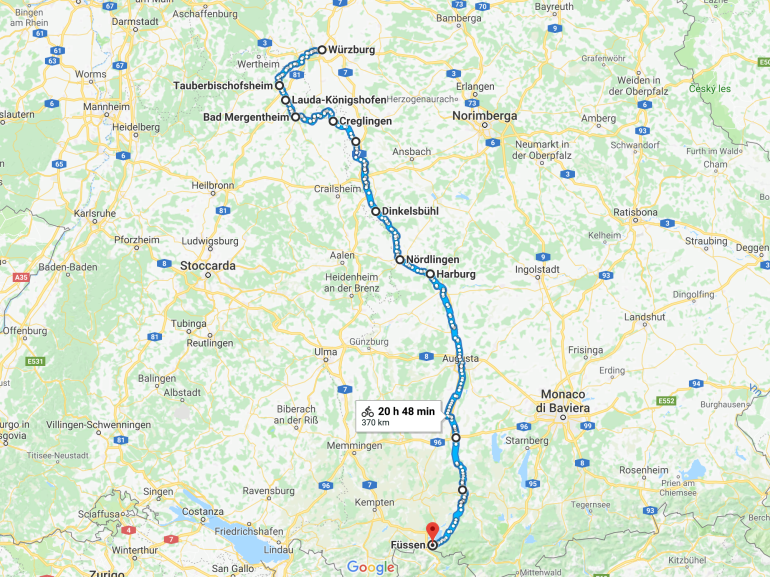
Let's start from Füssen and Schwangau, two amazing centres of Bavaria and first steps of the Romantische Strasse. Being surrounded by the Alps and little lakes, their nineteenth-century centres boast a breath-taking view. Moreover, it is here that you can find the fairy-tale castles of Neuschwanstein (that inspired the drawers of Walt Disney's fairy-tales) and Hoheschwangau, both realized in the 19th century by Maxmilian II and Ludwig II.

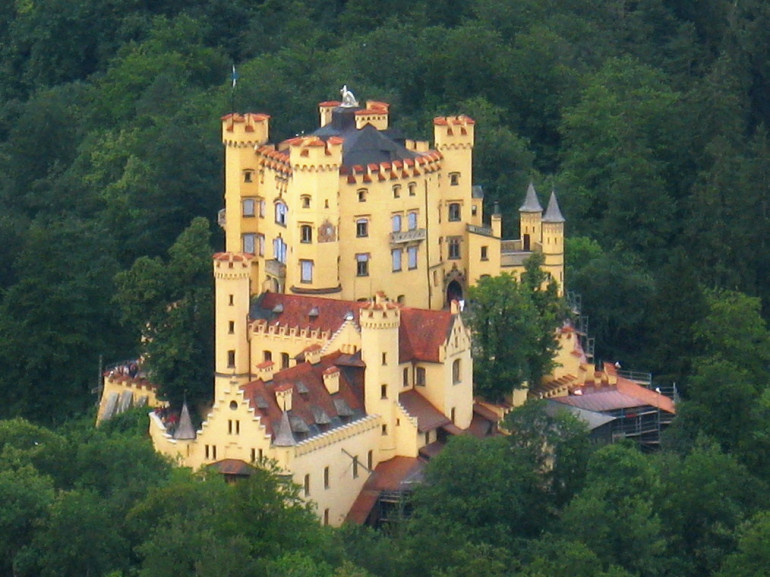
Going on directed to the north, you will enter the Bavarian area named Pfaffenwinkel, or "priests' corner" because of the numerous churches and ancient monasteries. Here you should absolutely visit the shrine called Wieskirche, which is a little pilgrimage church in the calm countryside around Steingaden. You will reach this place after a 20 km ride. The outside of the church is vivid white, while on the inside you will be astonished by its richness: white, gold and a rococò style will leave you speechless.

Continue your route towards Schongau, the last town of the Pfaffenwinkel area in the Romantische Strasse, and then start your voyage through the Middle-Ages. At the 72nd km you will be at the medieval town named Landsberg am Lech, which indeed has developed on the bank of the river Lech. This breaks the town in two parts, too: the historic centre on the right side and the modern centre on the left side.
A stop-over you cannot leave out is the next: 40 km to the north from Landsberg there is Augsburg: the third biggest town in Bavaria, founded by Emperor Augustus. Wander through its historic centre and admire the monuments and ancient palaces. Among them, the Cathedral and St. Anne Church stand out. The latter and Augsburg itself were crucial for the development of Protestantism: it was here that Martin Lutero's Confessio Augustana was presented. Here you can find also the house of the father of Amadeus Mozart, where today is held a show about the story of his family.
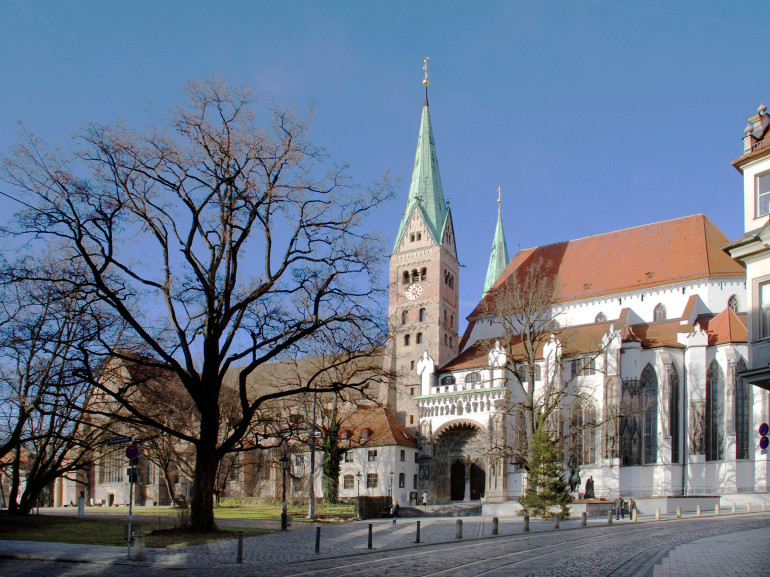
From here, you have further 44 km to go before reaching the next step of the Romantische Strasse: Donauwörth. This is a nice town where the rivers Danube and Wörnitz meet. This position let it become an important trade centre in ancient times, but it also gave the town a quite troubled story, being often involved in wars (also religious ones).
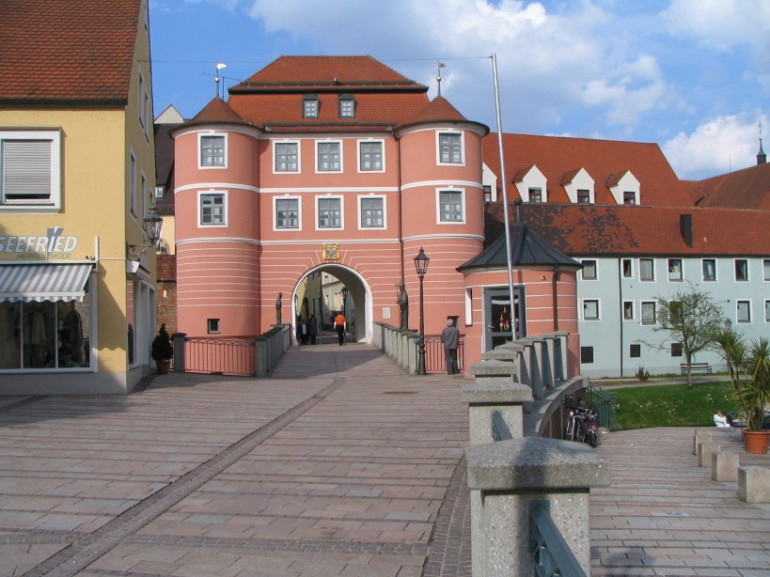
Go on along the Romantische Strasse for 12 km and you will get to Harburg and its beautiful castle. Being built in the XI or XII century, it is considered as one of the oldest castles in Germany. Restore your energies and have a break here. The castles has on its inside a small hotel and a restaurant where you can taste delicious food in a fantastic location.
Continue your route and ride for about 20 km. You will arrive at Nördlingen, in the middle of the Romantische Strasse, in Ries plain. The town is really interesting: its peculiarity is that of being built inside the crater of a meteorite. Moreover, it boasts the unique city walls being entirely accessible, besides a 90 m height bell tower, part of the late Gothic St. Georg church. In the Stadtmauermuseum you will have the chance to know something about the history of the town and the wars that occurred, such as the Nördlingen war, in 1634.
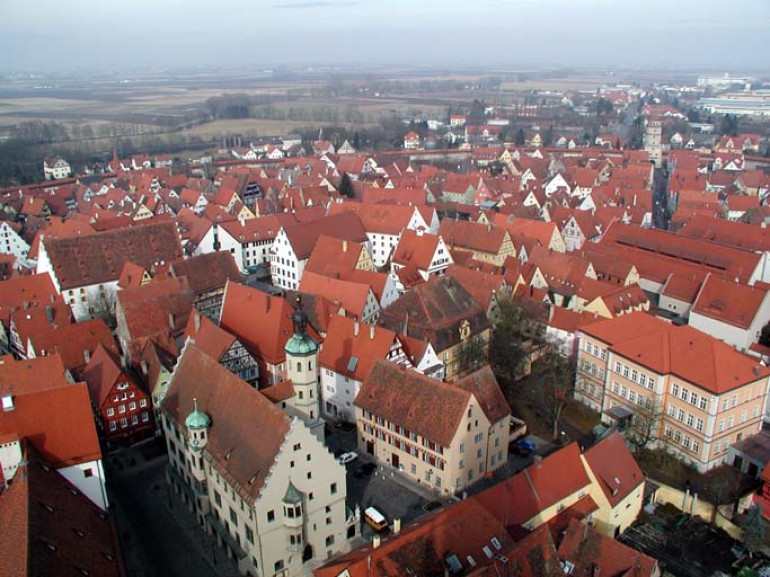
Ride along the route and, after having gone through some villages, you will get to the medieval Dinkelsbühl, km number 223 of the Romantische Strasse. It is in the valley of river Wörnitz and all around there is an ancient wall with 16 towers. Famous for having had the title of town of the Emperor in 1806, its historic centre is one of the best maintained of whole Germany.
Now you will enter the part of the itinerary which goes through the Tauber Valley. To ride in this place will be a pleasure because you will be surrounded by a very suggestive landscape.
45 km away from Dinkelsbühl there is Rothenburg ob der Tauber, one of the most famous medieval stops-over of this route and among the very few fortified towns in Germany. Have a rest and enjoy a walk through its historic centre: the narrow roads, the towers and the timber framing houses are typical. The walls come from 1300-1400, they are 3.5 km long and are partly accessible. Here time seems to be frozen and everywhere you can breath a magic atmosphere, as you could jump backwards in time. Visit the Gothic St. Jakob church, the count castle of Rothenburg from the X century, the Museum of dolls and toys and the Medieval Criminal Museum. It will be very interesting!
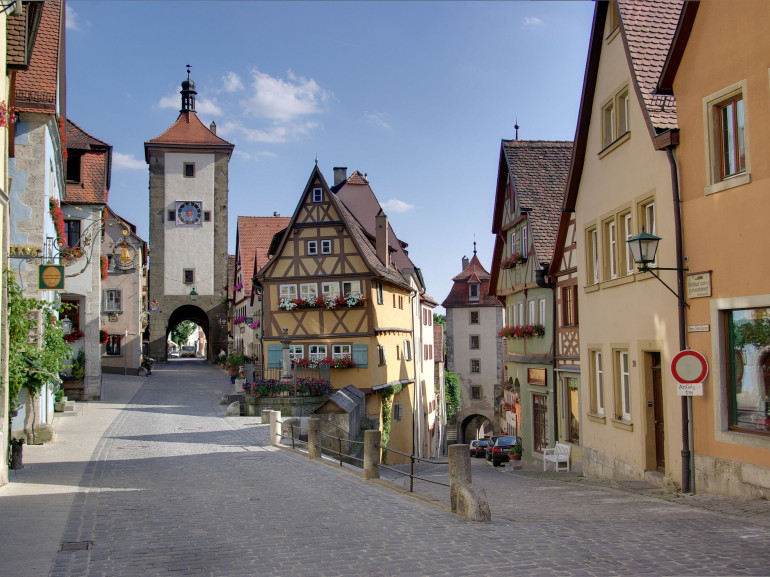
Go on with your journey to Würzburg. On the road to get there you will pass through many interesting centres. Here there are some you should notice:
- Crelingen, a town of ancient origins, as the ruins of a Celtic wall demonstrate. It had been also here that a first pogrom took place, causing the death of many Jewish inhabitants. Today you can visit here the Jewish cemetery and the Jewish Museum.
- Bad Mergentheim, one of the biggest towns in Tauber Valley, mostly popular for its thermal and curative waters, a quality which let it be safe from the attacks of the Second World War.
- Lauda e Königshofen, well-known for their vineyards and local wines.
- Tauberbischofsheim, 40 km away from Würzburg and 65 away from Rothenburg. Its symbol is Türmersturm, as to say, the guardian's tower. It is in the square of the former castle belonged to the Prince-Bishop of Mainz, which nowadays is a regional museum.
Here you are finally at the last stage of the Romantische Strasse: Würzburg, a town known most of all for its residential castle of prince and bishops, Residenz, which is also a UNESCO World Heritage. In the palace you can see the perfect meeting of different artistic styles and decorations coming from all over Europe, which makes it even more interesting.
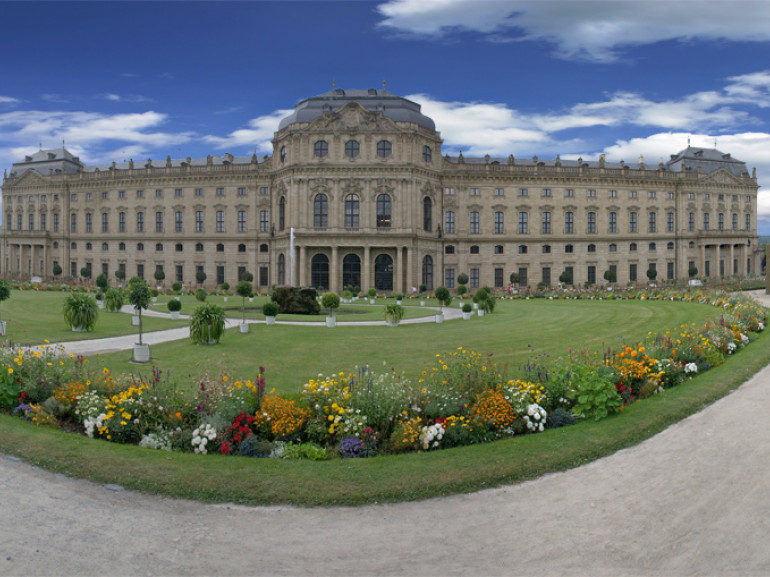
The historic importance of this city is so great that is had been considered as the not official capital of the Holy Roman Empire. It was right here that Emperor Frederick I celebrated his marriage. The city suffered a big destruction during the Second World War: considered as a hospital city where refugees and wounded could find a little peace, it was bombarded until it was almost complitely destructed. The Würzburg you visit today is the result of its recent reconstruction.

Riding your bicycle along the Romantische Strasse is even easier thanks to the numerous cycling paths that are linked to the main road, althought being not full of tourists. You can also shorten your itinerary by choosing only some of the towns and moreover there is a bus service, the Europabus coach service, that let cyclists of the Romantische Strasse get on board with their bikes and make a piece of the track by bus (booking is advisable).
Cover photo: photo via Wikipedia

